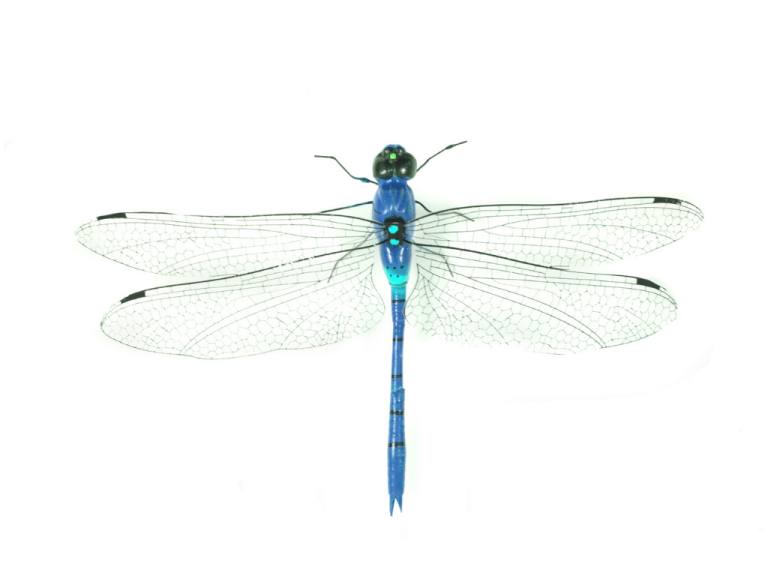In the transition from summer to autumn, whenever it is about to rain or just after the rain has cleared, many dragonflies often hover over the water. Dragonflies are highly skilled flyers, darting forward and backward, and sometimes hovering in place like a helicopter. However, when you try to catch them with a net, they shoot up into the sky like a meteor and then, after a while, return to hover over the same spot, as if playfully teasing you.
In the insect world, dragonflies are considered the top flyers. While the flight speed of bees is already impressive for insects, at just 4.5 meters per second with 250 wing beats, dragonflies can reach a top speed of 7 meters per second with only 20-38 wing beats. Moreover, they are capable of long-distance flights. Every year in the summer and autumn, countless dragonflies cross the Dover Strait from the northern coast of France to England, a journey comparable to a non-stop around-the-world flight for humans.
Dragonflies’ ancestors appeared on Earth about 300 million years ago. At that time, their wings and body shape resembled those of today’s mantises, with wings spanning up to 70 centimeters. They were truly gigantic and awe-inspiring creatures, not something anyone would dare to catch for fun. Over time, as they developed their flying abilities, their bodies gradually evolved into the current form that is well-suited for flight.
Why do dragonflies have such remarkable flying abilities? Biologists have concluded through observation and research that they possess particularly strong and well-developed muscles on their thorax that power their wing movements. Unlike the simultaneous front-to-back wing movement of bees and cicadas, dragonflies’ two pairs of long wings move differently: the front wings beat slightly upward and forward, while the hind wings beat slightly downward. This allows dragonflies to hover in place, move forward or backward, and fly straight at high speeds over long distances. Their light bodies, large wings, and aerodynamic shape contribute to their superior flight capabilities.
Dragonflies also have exceptionally large compound eyes that occupy almost their entire head, each containing about 10,000 to 28,000 individual facets, ten times more than other insects. Unlike other near-sighted insects, dragonflies can see up to 5-6 meters away. Their three pairs of legs are equipped with sharp hooks, ensuring that once they catch an insect, it cannot escape. Additionally, they can catch insects while flying, allowing them to feed on the go without having to stop and search for food. This capability gives them an advantage in speed and distance over other insects.

